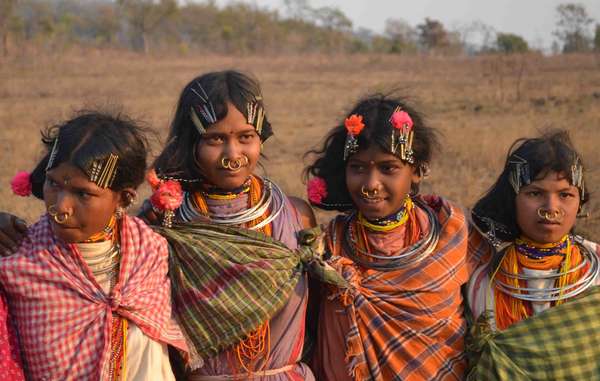
by Deep Green Resistance News Service | Mar 1, 2016 | Indigenous Autonomy, Mining & Drilling
Featured image: The Dongria unanimously rejected the mining project and have vowed to protect the Niyamgiri hills © Bikash Khemka/Survival International
By Survival International
A tribe in eastern India are facing a new threat from mining on their ancestral land, despite having won a major “David & Goliath” legal battle in 2014.
The Dongria Kondh were originally threatened by international mining corporation Vedanta Resources, who tried to open a bauxite mine in their sacred Niyamgiri hills, but were prevented by the Indian Supreme Court, which ruled that the Dongria should decide whether to allow the mine to go ahead.
The tribe unanimously rejected Vedanta’s plans to mine their hills during a historic referendum in which all twelve villages that were consulted voted against the mine.
Now, however, the Odisha state is trying to re-open the issue, petitioning for the right to hold another referendum for the Dongria to pave the way for a large-scale mining operation, this time by state-run Odisha Mining Corporation.
British-owned Vedanta opened a bauxite refinery close to the Dongria’s hills without having secured permission to mine in the area. Even though the mine itself was quashed, the refinery has continued to operate at a loss.
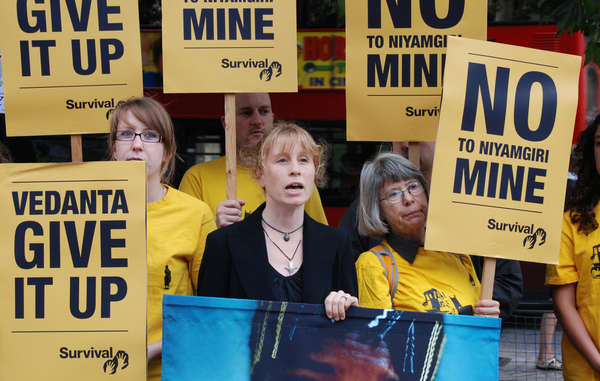
Survival campaigned against Vedanta’s plans and will continue to advocate for the Dongria’s right to protect their sacred hills.
© M. Cowan/Survival International
Despite strong resistance to the project from the Dongria, who have lived in the Niyamgiri hills for generations, the state authorities are keen to keep the refinery open and expand mining operations in the region.
Last year Mukuna Sikaka, a Dongria tribesperson, said: “We are not going to allow mining over Niyamgiri at any cost – not for all the developmental efforts of the government.”
Survival International led a successful global campaign against Vedanta’s plans, and is now calling for the Odisha state authorities to respect the Dongria’s decision to reject the mine.
Survival Director Stephen Corry said: “It is bitterly disappointing to see that the Odisha state authorities have still not learned to respect the wishes of the Dongria Kondh. Tribal peoples have a right under Indian and international law to determine what happens on their lands, yet still governments and corporations insist on putting profits before people’s wishes. Attempts to resume this project after international outcry and stern resistance from the Dongria themselves are not only un-democratic and illegal, but also deeply immoral.”
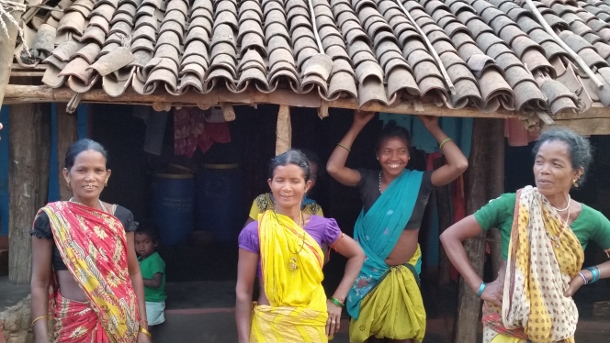
by DGR Colorado Plateau | Nov 7, 2015 | Colonialism & Conquest, Human Supremacy, Indigenous Autonomy, Indirect Action
In early October, news emerged that India’s Ministry of Environment, Forest and Climate Change was blocking the implementation of a high-level government panel’s report on tribal rights that recommended the creation of stringent rules to safeguard indigenous people from displacement. Meanwhile, two state governments have begun implementing a much different set of guidelines — issued in August without any interference — that allow the private sector to manage 40 percent of forests for profit at the expense of indigenous forest dwellers. In addition, another ordinance passed this year will permit private corporations to easily acquire land and forests from indigenous communities and carry out ecologically harmful mining. These legislative and policy decisions are usually made without the knowledge of indigenous communities whose lives, livelihoods and ecosystems will be worsened by these irresponsible actions of the government. Hence, indigenous communities in Uttar Pradesh, a northern state and Odisha, in the east, are strengthening their organizing to protect their rivers, lands, forests and hills from “development” that would displace thousands of local residents and destroy the environment.“People from my community and I were beaten, detained or jailed unnecessarily for opposing tree felling in our forests, some years ago,” said Nivada Debi, a feisty 38-year-old woman from the Tharu Adivasi community in Uttar Pradesh. “We visited the police station multiple times for their release. The government did not assist the injured. Despite the police and government indifference, we will fight for our land and environment.”A mother of four children subsisting on the forests, Debi is active in grassroots resistance that started nearly 20 years ago and has grown into the All India Union of Forest Working People, or AIUFWP. The group is made up of many indigenous people who subsist on forests and are collectively protecting forests from poachers and encroachers.
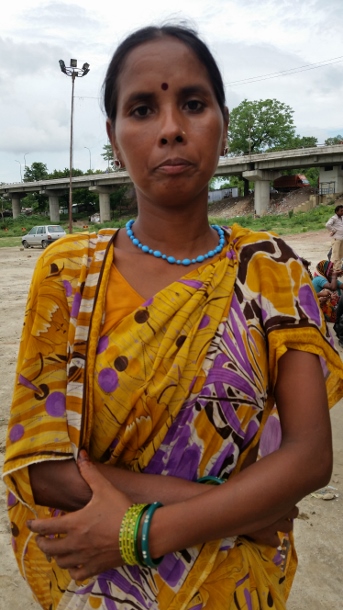
Debi was among hundreds — from the AIUFWP, the allied Save Kanhar Movement and other resistance groups — who traveled to Lucknow in July 2015 for a rally protesting the continued incarceration of their comrades fighting land grabbing in other districts of Uttar Pradesh. Roma Malik, the AIUFWP deputy general secretary, and Sukalo Gond, an Adivasi, which means original inhabitant, were among those arrested on June 30, before they were to address a large public gathering about the illegal land acquisition for the Kanhar dam and the violent repression of its opponents by the state. Another member of AIUFWP, Rajkumari, who prefers to go by her first name, was jailed on April 21, after 39 Adivasis and Dalits, who are considered outside the caste hierarchy, were brutally shot at by the police during a peaceful protest on April 18. The demonstration, which began on April 14 — the birthday of B.R. Ambedkar, the architect of the Indian constitution and an icon for many Indians, particularly Dalits — was opposing the construction of a dam across the Kanhar river in the Sonbhadra district of southeastern Uttar Pradesh.
Rajkumari was released toward the end of July while Gond and Malik were freed in September. However, others are still imprisoned on fabricated charges. Courts are delaying hearing their cases or denying them bail.
AIUFWP members, some of whom were previously involved with other local resistance movements, have been actively opposing the construction of the Kanhar dam for years. It would submerge over 10,000 acres of land from more than 110 villages in Uttar Pradesh and the neighboring states of Chattisgarh and Jharkhand, displacing thousands of local people and disrupting their lives and livelihoods. The dam was approved by the Central Water Commission of India in 1976, but was abandoned in 1989 after facing fierce opposition, especially from the local people whose lives and ecosystem would be destroyed by the proposed dam. However, construction resumed in December 2014, violating orders to stop it from the National Green Tribunal — a government body that adjudicates on environmental protection, forest conservation and natural resource disputes. No social impact assessment was done, nor were the necessary environmental or forest clearances — mandated by the Forest Conservation Act — obtained by the state government.
“Since this dam can destroy our survival and also adversely impact the surroundings, we have been opposing its construction and related land acquisition for many years,” said Shobha, a determined 42-year-old Dalit. “On December 23, 2014, the police caned some of our comrades when we were peacefully protesting the revival of building the dam earlier that month. However, the police falsely accused some leaders of our struggle of attacking the sub-divisional magistrate.” Shobha, who also prefers to go only by her first name, is among the vocal leaders of a women’s agricultural laborers union, which has allied with AIUFWP, in the village of Bada.
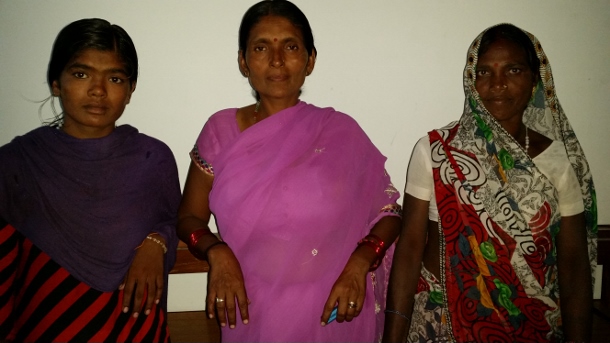
Around 400 miles from Sonbhadra, in the Kalahandi and Rayagada districts of southern Odisha, live the Dongria Kondhs, an indigenous community of over 8,000 people. They have been fighting tirelessly to protect their sacred mountain, the nearly 5,000-foot high Niyamgiri, from large private corporations — like Vedanta Limited — that are trying to mine bauxite in the area to produce aluminum. Supporters of the Dongria Kondhs were arrested in Delhi on August 9 outside the Reserve Bank of India, as they peacefully highlighted Vedanta’s illegitimate and harmful mining in the Niyamgiri. Vedanta’s mining would violate the Forest Rights Act, which states that indigenous communities are entitled to remain in the forests — and utilize the produce, land and water in the forests — while conserving and protecting them.
“The Niyamgiri symbolizes a parent to our community,” said Sadai Huika, a steadfast 45-year-old Dongria Kondh woman from Tikoripada village. “While the streams that originate from it help our farming, the plants and grass that grows on it feed our cattle and goats. We cannot exist without it and will safeguard it from anyone trying to harm it.”
Huika and people from hundreds of villages near the Niyamgiri are active members of the Niyamgiri Protection Forum, which originated around 2003 to resist attempts by Vedanta to begin mining where the Kondhs live, with the support of the Odisha state government. At every one of the 12 village council meetings with government officers held in 2013 atop the Niyamgari, community members stated that they would not allow mining nearby.
Kumuti Majhi, an elderly Dongria Kondh man and one of the forum’s leaders, is among the few people who have traveled within and outside Odisha to advocate against mining and garner vital support for their struggle. He has met ministers to explain how significant the Niyamgiri is to his community and their reasons for safeguarding it.
By organizing protests locally and with allies around the world — and meetings with Vedanta’s shareholders and empathetic government officials, who the forum has enlightened about the need to protect the Niyamgiri — the group has stalled the mining.
“We know that extracting bauxite from the Niyamgiri will pollute our environment and also affect all living beings here,” Majhi said. “Hence, we will stop anyone coming to plunder the Niyamgiri, despite police harassment and false charges against us and our families.”
Pushpa Achanta is a Bangalore-based freelance journalist, blogger and writer on development and human interest issues. She is the lead author of a book titled Ripples: The Right to Water and Sanitation for Whom, published in July 2013 by the Indian Social Institute in Bangalore. Her articles have appeared in collections of essays and features on different subjects. She also enjoys penning verse, taking nature photography and mentoring youth.
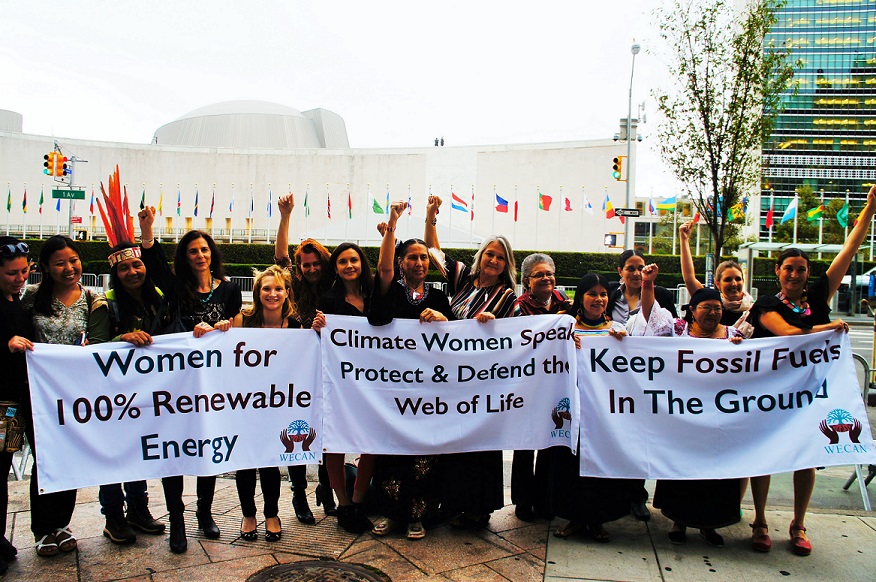
by DGR Colorado Plateau | Oct 11, 2015 | Climate Change, Lobbying, Protests & Symbolic Acts, Women & Radical Feminism
SAN FRANCISCO– On Tuesday, September 29th, 2015 women from fifty countries around the world took action for climate justice, gender equality, bold climate policies and transformative solutions as part of the Global Women’s Climate Justice Day of Action organized by the Women’s Earth and Climate Action Network (WECAN International).
From Sudan to the Philippines, from Ecuador to France, women raised their voices collectively to show resistance to social and environmental injustice and to present their solutions and demands for a healthy, livable planet.
In Port Harcourt, Nigeria women organized the ‘African Women Uniting for Energy, Food, & Climate Justice Exchange’, during which they shared struggles and solutions around oil extraction in the Niger delta and led a march through the city. In Swaziland, women united to sign the Women’s Climate Declaration and dialogue about why women experience disproportionate climate impacts and what can be done to address this injustice.
In Scotland, women collected trash from the beach and ocean to create an art installation highlighting the plight of threatened Arctic ecosystems. In Odisha, India, women united to speak out against deforestation fueled by the mining industry, taking direct action by planting trees and writing a memorandum to local government officials calling for communitywide reforestation programs led by women. Many worldwide participants voiced their demands for their governments to keep fossil fuels in the ground and immediately finance a just transition to 100% renewable energy.
Action recaps, photos, and statements from worldwide participants have been compiled on a central Day of Action gallery, from which they are being shared and amplified across the globe.
While women held decentralized actions in their communities, WECAN International convened a September 29th hub event, ‘Women Speak: Climate Justice on the Road to Paris & Beyond’ at the United Nations Church Center in New York City, directly across the street from where world leaders gathered for the annual United Nations General Assembly.
The event featured presentations and declarations of action by outstanding leaders including Indigenous activist and Greenpeace Canada campaigner Melina Laboucan-Massismo, May Boeve of 350.org, Jacqui Patterson of the NAACP, Patricia Gualinga, Kichwa leader of Sarayaku Ecuador, Thilmeeza Hussein of Voice of Women Maldives, and a special video message from Mary Robinson, former President of Ireland and President of the Mary Robinson Foundation-Climate Justice. The event concluded with a historic announcement and presentation of the ‘Indigenous Women of the North and South – Defend Mother Earth Treaty Compact 2015’.
As the day drew to a close, WECAN International and allies united for a direct action outside of the United Nations Headquarters.
“Women around the world are well aware that what is happening in the ‘halls of power’ is not nearly enough given the degree of climate crisis that we face and the injustices and impacts felt by women on the frontlines across the globe,” explained Osprey Orielle Lake, Founder and Executive Director of the Women’s Earth and Climate Action Network, “On September 29th, women across the world mobilized for bold, transformative climate change solutions and demonstrated the strength, diversity, and vitality of the women’s movement for climate justice. Women have always been on the frontlines of climate change, and now we are taking action to make sure that our voices and decision-making power are at the forefront as well. The stories, struggles, and solutions shared as part of the Global Women’s Climate Justice Day of Action will be carried forward to COP21 in Paris and beyond.”
***
The Women’s Earth and Climate Action Network (WECAN International) is a solutions-based, multi-faceted effort established to engage women worldwide as powerful stakeholders in climate change, climate justice, and sustainability solutions. Recent work includes the 2013 International Women’s Earth and Climate Summit, Women’s Climate Declaration, and WECAN Women’s Climate Action Agenda. International climate advocacy is complemented with on-the-ground programs such as the Women’s for Forests and Fossil Fuel/Mining/Mega Dam Resistance, US Women’s Climate Justice Initiative, and Regional Climate Solutions Trainings in the Middle East North Africa region, Latin America, and Democratic Republic of Congo. WECAN International was founded in 2013 as a project of the 501(c)3Women’s Earth and Climate Caucus (WECC) organization and its partner eraGlobal Alliance.
www.wecaninternational.org
@WECAN_INTL
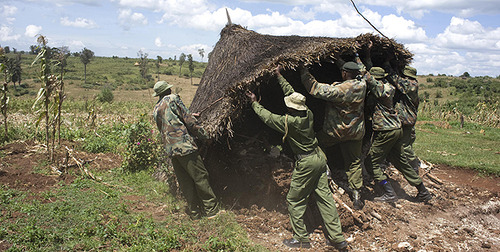
by Deep Green Resistance News Service | Feb 7, 2015 | Colonialism & Conquest, Indigenous Autonomy
By Stephen Corry / Survival International
Twenty years ago, fundraising publicity for the World Wildlife Fund (WWF) posed a very odd question: whether to send in the army or an anthropologist to stop indigenous people destroying the Amazon rainforest. Equally bizarre, it claimed that the media was “inundated with appeals to save native peoples” and asked, “Do they really deserve our support?” The world’s leading conservation organization went on by saying that tribes had learned many things from outsiders, including “greed and corruption.” WWF’s answer to this apparent dilemma was thankfully not the army, but for concerned people to give it more money (its daily income is now $2 million) so it could “work with native peoples to develop conservation techniques.”
At Survival International, we were dismayed, and so were tribal organizations when we showed them the advertisement. For WWF to blame “duped” tribespeople for deforestation was serious enough (giving the impression they trumped conservationists in attracting more funding was laughable), but even mentioning soldiers in the same sentence as conservationists uncomfortably echoed the latter’s dubious roots in colonialist ideology.
However, WWF’s assertions are likely to have raised more eyebrows with its supporters than with many tribal people, for whom big conservation organizations have long been considered in the same bracket as development banks, road and dam builders, miners and loggers. All, they would say, are outsiders bent on stealing tribal lands.
Over the last 20 years, some conservation groups have at least cleaned up their language: Their policies now make claims about working in partnership with local tribal communities, about consulting them and about how much they apparently support UN standards on indigenous rights. There are undoubtedly many in the conservation industry who believe all this, and who realize that tribal peoples are – as a broad principle – just as good conservationists as anyone else, if not considerably better.
Even those who disagree do at least recognize that alienating local people – whether tribal or not – eventually leads to protected areas being opposed and attacked. It’s one reason why the conservation industry makes much, at least on paper, of bringing local communities on board. But apart from written policies, how much have things really changed in the last 20 years? Tragically for many, the answer is “not much”; in some places, they’re getting worse.
“Voluntary Relocation” From Tiger Reserves
For example, the WWF-inspired tiger reserves in India are increasingly used to expel tribes from their forests so they can be opened up to tourism. The people are bribed with a fistful of rupees to give up the land, which has sustained their families for countless generations. More often than not, promises are broken and they’re left with empty pockets and a few plastic sheets for shelter. Whether any financial incentives materialize or not, they are backed up with threats and intimidation: Tribes are repeatedly told that if they don’t get out, their homes and crops will be destroyed and they’ll get nothing. When they finally cave in to this pressure, the conservationists call it “voluntary relocation.” Needless to say, it’s illegal.
It might surprise people to know there’s evidence that tigers thrive in the zones where tribal villages remain – the people’s small open fields encourage more tiger prey than in the enclosed forest. When they’re kicked out, their old clearings give way to roads, hotels and truckfuls of gawping tourists. Studies show animal stress behavior increases with tourism. In other words, if you want happy tigers, then it’s much better to leave the tribal people where they’ve always been. They are surely the best eyes and ears to report any poaching activity anyway; Baiga villagers from the famous Kanha reserve respect the big cats as their “little brothers.”
Hunters or Poachers?
Guards in tiger reserves intimidate and beat tribespeople found on land that was once their ancestral forests. But at least they stop short of the torture to which the Baka “Pygmy” people in Cameroon are subjected by anti-poaching forces. To return to the advertisement: Conservation is sending in soldiers, just as it always has. Heavily armed, government paramilitary squads accompany “ecoguards,” which are equipped using WWF funds. They beat those thought to have entered the protected areas, which are in fact Baka ancestral homelands. Tribespeople are assaulted even if they’re merely suspected of knowing those who have gone in. Meanwhile, their land is logged and mined, including by WWF partners. A Baka man told us, “They beat us at the WWF base. I nearly died.” WWF seems incapable of stopping these abuses. It has known about them for years, but is scathing about those who denounce them: Survival’s “absurd” campaign to draw attention to them would, it claimed, help the “real” criminals.
Tribal victims are invariably accused of “poaching,” a term which now means any sort of hunting, including for food, with which conservationists disagree. That certainly doesn’t encompass all hunting. Many conservation organizations, including WWF, don’t oppose fee-paying big game hunting. On the contrary, they profit from it, even quietly whispering that it’s a vital ingredient in conservation.
Senior environmentalists are not averse to having a shot themselves. The former president of WWF-Spain – the previous king of Spain – was recently photographed in Botswana with his elephant kill. The resulting scandal forced him to step down, but only because the picture was leaked. Kings can hunt elephants, which we’re told are threatened, but Bushmen can’t hunt to eat, not a single one of the plentiful antelope they’ve lived off sustainably since time immemorial. If they’re even suspected of it, they’ll be beaten and tortured like the Baka. This has been going on for decades, as the president of Botswana, Ian Khama, has tried to force all Bushmen out of their Central Kalahari region. In 2014, he banned hunting throughout the country – except for paid safari hunting of course. It was another illegal act in the guise of conservation.
Conservation and Diamond Mining
An avid environmentalist himself, and board member of Conservation International (CI) no less, General Khama claims he wants to clear the zone so that the wildlife will be undisturbed. This is decidedly odd because the fauna has been much disturbed over the last 20 years, but not by the remaining tribespeople: Mining exploration continues apace and you will soon be able to buy a diamond mined from inside the so-called game reserve. Due to go on sale around Valentine’s Day, these expensive love tokens now play a part in the destruction of the last hunting Bushmen in Africa.
In March, Khama is due to host the second United for Wildlife meeting – a consortium of the world’s major conservation organizations, including WWF and CI. A British royal will doubtless turn up and join the cry against “illegal poaching.” The assembly of conservationists, who routinely violate the law in their treatment of tribal peoples, will be hosted by a president guilty of trying to eradicate Bushmen hunters. No doubt the hypocrisy will be lost in the sanctimoniousness with which the press will accord the photo ops. The first United for Wildlife meeting, in London, was also hosted by Princes William and Harry – both had returned the previous day from hunting in Spain.
A couple of years ago, to the southwest of the Central Kalahari Game Reserve diamond mine, another Bushmen community was going to be thrown off their land because they had the temerity to remain where CI had tried to establish a new “wildlife corridor.” CI apparently has good policies, including having to consult the locals, so Survival International asked how it went about consulting with the Bushmen of Ranyane during its long, expensive Botswana study. Although the village is an easy four-hour drive from the nearest big town, CI admitted there had been no attempt to consult at all.
Conservation as a Feel-Good Commodity
If this handful of examples surprises anyone, it’s because the industry has poured enormous resources into gaining a place among the world’s most trusted brands. This long PR exercise has involved blurring and hiding (rather than honestly confronting) conservation’s colonial, indeed racist, past. Conservation has become a commodity, raising enormous sums of money, and rewarding supporters with an equally large feel-good factor, one that is nowhere near as straightforwardly apolitical as we are led to believe. Those who suggest “conservation” might not really be as holy as some claim are routinely denigrated as blasphemers and apostates.
If the movement is to have any chance of achieving its stated objectives – which I, for one, pray it will – it’s vital that it’s scrutinized, questioned and exposed: For conservation casts an ideological opposition of nature versus people that is profoundly damaging to our real relationship with our environment. By doing so, it harms both people and ultimately the environment, too; conservation destroys those who’ve nurtured their surroundings for timeless generations – people who have actually fashioned what we now mistake as natural. It works too often in direct opposition to its own goals.
When experts and researchers point this out, and criticize the industry, its common reaction is to try and silence them. For example, when award-winning German filmmaker and journalist, Wilfried Huismann, conducted a two-year investigation into the WWF, the film he produced, The Silence of the Pandas, was initially blocked through legal injunctions. You can read his book, PandaLeaks, though you won’t find it in mainstream bookstores. WWF’s legal team is very quick off the mark.
But many critics are committed environmentalists themselves. They too want to prevent the world’s most beautiful and diverse regions from being overrun by the industrialization that has destroyed so much and reduced so many people to poverty and dependency. The problem is that the conservation industry is not only failing to achieve this; it can be working in the opposite direction. According to Huismann, WWF is turning a blind eye to the destruction of huge areas in Southeast Asia and South America for biofuel cultivation, requiring millions of gallons of toxic pesticides and herbicides.
Tribal Peoples Are the Best Conservationists
If the conservation conglomerates really are to start preventing the further industrialization of these vital ecosystems, they surely must first remove giant polluters like Monsanto and BP from their own boards. Conservation has to stop the illegal eviction of tribal peoples from their ancestral homelands. It has to stop claiming tribal lands are wildernesses when they’ve been managed and shaped by tribal communities for millennia. It has to stop accusing tribespeople of poaching when they hunt to feed their families. It has to stop the hypocrisy in which tribal people face arrest and beatings, torture and death, while fee-paying big game hunters are actively encouraged.
The WWF publicity concluded, “Enough is enough” – I agree; it’s time for change. It’s obviously too late for those peoples whom conservation has killed, but what’s still going on today is illegal, immoral and does not deserve public support. Conservation has to wake up to the fact that tribal peoples are better at looking after their environment than anyone else.
Despite the millions pouring into the conservation industry daily, the environment remains in deepening crisis. It’s time to realize that there is a better way. Firstly, tribal rights have to be acknowledged and respected – are they not people too? Secondly, they have to be treated as the best experts at defending their own land. Thirdly, conservationists must realize it’s they, themselves, who are the junior partners here, not the tribespeople.
The real creators of the world’s national parks are not the ideologues and evangelists of the environmental movement, but the tribal peoples who fashioned their landscapes with knowledge and understanding accumulated over countless generations.
From TruthOut: http://www.truth-out.org/news/item/28888-wildlife-conservation-efforts-are-violating-tribal-peoples-rights
by Deep Green Resistance News Service | Apr 2, 2013 | Toxification
By Edward Wong / The New York Times
Outdoor air pollution contributed to 1.2 million premature deaths in China in 2010, nearly 40 percent of the global total, according to a new summary of data from a scientific study on leading causes of death worldwide.
Figured another way, the researchers said, China’s toll from pollution was the loss of 25 million healthy years of life from the population.
The data on which the analysis is based was first presented in the ambitious 2010 Global Burden of Disease Study, which was published in December in The Lancet, a British medical journal. The authors decided to break out numbers for specific countries and present the findings at international conferences. The China statistics were offered at a forum in Beijing on Sunday.
“We have been rolling out the India- and China-specific numbers, as they speak more directly to national leaders than regional numbers,” said Robert O’Keefe, the vice president of the Health Effects Institute, a research organization that is helping to present the study. The organization is partly financed by the United States Environmental Protection Agency and the global motor vehicle industry.
What the researchers called “ambient particulate matter pollution” was the fourth-leading risk factor for deaths in China in 2010, behind dietary risks, high blood pressure and smoking. Air pollution ranked seventh on the worldwide list of risk factors, contributing to 3.2 million deaths in 2010.
By comparison with China, India, which also has densely populated cities grappling with similar levels of pollution, had 620,000 premature deaths in 2010 because of outdoor air pollution, the study found. That was deemed to be the sixth most common killer in South Asia.
The study was led by an institute at the University of Washington and several partner universities and institutions, including the World Health Organization.
Read more from The New York Times: http://www.nytimes.com/2013/04/02/world/asia/air-pollution-linked-to-1-2-million-deaths-in-china.html?_r=1&







